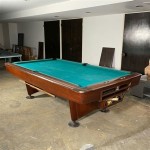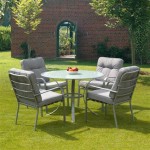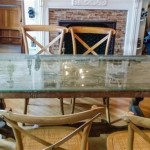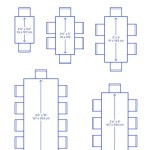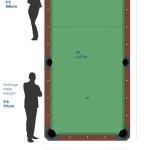```html
Understanding Folding Ping Pong Table Legs: Design, Functionality, and Maintenance
Folding ping pong tables are a popular choice for recreational spaces, schools, and even homes where space is at a premium. The defining characteristic of these tables lies in their ability to be easily stored when not in use. This portability and space-saving feature is largely made possible by the design and functionality of the folding ping pong table legs. These legs are not simply supports; they are integral components that dictate the table's stability, ease of use, and longevity. A comprehensive understanding of the design, functionality, and maintenance requirements of these legs is crucial for maximizing the lifespan and enjoyment of a folding ping pong table.
The design of folding ping pong table legs involves a careful balance of structural integrity, ease of folding, and aesthetic appeal. Manufacturers typically employ a variety of materials, including steel, aluminum, and reinforced plastics, depending on the intended use and price point of the table. Steel legs, for instance, offer superior strength and durability, making them ideal for tables intended for frequent use and transport. Aluminum legs, on the other hand, provide a lighter weight alternative, facilitating easier maneuverability. The choice of material directly impacts the overall weight of the table and its resistance to wear and tear.
Beyond the material selection, the folding mechanism itself is a critical design consideration. Several types of folding mechanisms are commonly used, each with its own advantages and disadvantages. Some tables utilize a simple hinge system, where the legs fold inward towards the table's underside. Others employ more complex mechanisms involving levers, locking pins, and telescopic sections, which allow for more compact folded dimensions and enhanced stability when the table is in its playing position. The complexity of the mechanism often correlates with the price of the table.
The stability of the table is paramount for a positive playing experience. Factors such as leg thickness, the width of the leg base, and the presence of cross-bracing all contribute to the table's overall stability. Wider leg bases provide a larger support area, reducing the likelihood of the table tipping over during gameplay. Cross-bracing, which involves connecting the legs with horizontal or diagonal supports, further enhances stability by distributing weight more evenly. The design must account for the dynamic forces exerted on the table during a ping pong match, including the impact of the ball and the movements of the players.
Key Point 1: Types of Folding Mechanisms and Their Impact on Usability
The type of folding mechanism employed significantly impacts the usability of a folding ping pong table. Simpler hinge mechanisms are generally easier to operate, requiring fewer steps to fold and unfold the table. However, they may not offer the same level of compactness as more complex mechanisms. Complex mechanisms, while potentially offering a more streamlined folded profile, can be more challenging to operate and may require more time and effort to set up and take down the table. Furthermore, complex mechanisms often involve more moving parts, which can increase the likelihood of mechanical failure over time.
Lever-based folding mechanisms are commonly found on higher-end folding ping pong tables. These mechanisms typically involve a lever that, when engaged, releases a locking mechanism, allowing the legs to fold. The advantage of this design is that it often allows for one-person operation, making it easier for individuals to set up and take down the table independently. However, the lever mechanism itself can be prone to damage if excessive force is applied. Careful inspection of the lever and its associated components is necessary to ensure proper functionality.
Telescopic folding mechanisms involve legs that can be extended or retracted, allowing for adjustments in table height. This feature can be particularly useful for accommodating players of different heights or for leveling the table on uneven surfaces. However, telescopic legs can be more susceptible to wobbling if the locking mechanism is not properly tightened. Regular maintenance of the locking mechanism, including cleaning and lubrication, is essential for maintaining the stability of telescopic legs.
The choice of folding mechanism should be based on a careful consideration of the user's needs and preferences. Factors such as the frequency of use, the number of people who will be setting up and taking down the table, and the available storage space should all be taken into account. A table with a simpler folding mechanism may be more suitable for users who prioritize ease of use, while a table with a more complex mechanism may be preferred by users who require a more compact folded profile.
Key Point 2: Material Selection and its Influence on Durability and Weight
The material used in the construction of folding ping pong table legs significantly impacts the table's overall durability and weight. Steel legs are generally the most durable option, offering excellent resistance to bending and breaking. However, steel legs are also the heaviest, which can make the table more difficult to transport and maneuver. Aluminum legs provide a lighter weight alternative, making the table easier to carry and store. However, aluminum is typically less durable than steel and may be more susceptible to bending or denting under heavy loads.
Reinforced plastics are also used in the construction of some folding ping pong table legs. These materials offer a good balance of strength and weight, making them a popular choice for mid-range tables. However, the quality of the plastic can vary significantly, and some plastics may become brittle or crack over time, particularly when exposed to extreme temperatures or sunlight. It is essential to choose a table with high-quality reinforced plastic legs to ensure long-term durability.
The finish applied to the legs also plays a role in their durability. Powder coating, for example, provides a durable and corrosion-resistant finish that can help protect the legs from rust and scratches. Chrome plating is another common finish that offers a similar level of protection. However, chrome plating can be more susceptible to scratching than powder coating. The choice of finish should be based on the expected usage conditions of the table and the desired aesthetic appearance.
The weight of the table legs directly impacts its portability. Lighter tables are easier to transport and store, making them ideal for individuals who need to move the table frequently. However, lighter tables may also be less stable than heavier tables, particularly during vigorous gameplay. The user must carefully consider the trade-offs between weight and stability when choosing a folding ping pong table.
Key Point 3: Maintenance and Care for Prolonging the Lifespan of Folding Legs
Proper maintenance and care are essential for prolonging the lifespan of folding ping pong table legs. Regular cleaning, lubrication, and inspection can help prevent premature wear and tear and ensure that the legs continue to function properly. Neglecting these maintenance tasks can lead to corrosion, stiffness, and even mechanical failure.
Cleaning the legs regularly is essential for removing dirt, dust, and other debris that can accumulate over time. A damp cloth and mild detergent are typically sufficient for cleaning the legs. Avoid using harsh chemicals or abrasive cleaners, as these can damage the finish and potentially weaken the legs. After cleaning, be sure to thoroughly dry the legs to prevent rust and corrosion.
Lubricating the folding mechanisms is crucial for ensuring smooth and easy operation. Use a silicone-based lubricant specifically designed for metal or plastic parts. Apply the lubricant sparingly to all moving parts, including hinges, levers, and locking pins. Avoid using oil-based lubricants, as these can attract dirt and dust, which can eventually clog the mechanism. Regularly lubricating the folding mechanisms will help prevent stiffness and ensure that the table folds and unfolds smoothly.
Regularly inspecting the legs for signs of damage is also essential. Check for cracks, dents, or corrosion. Pay particular attention to the folding mechanisms and locking pins. If any damage is detected, it is important to repair it promptly to prevent further deterioration. Small cracks can often be repaired with epoxy, while more significant damage may require replacing the entire leg. Ignoring damage can lead to more serious problems down the road, potentially rendering the table unusable.
Storing the table properly when not in use can also help prolong the lifespan of the legs. Avoid storing the table in damp or humid environments, as this can promote rust and corrosion. If storing the table outdoors, be sure to cover it with a waterproof cover to protect it from the elements. Proper storage will help protect the legs from damage and ensure that they remain in good condition for years to come.
```
How To Make A Diy Folding Ping Pong Table Half The Cost Of Bought

How To Make A Diy Folding Ping Pong Table Half The Cost Of Bought

Folding Table Legs Ping Pong China Tennis Tables Indoor And Mdf Made In Com

Gosports 72 In Indoor Freestanding Ping Pong Table The Tables Department At Com

The Rs Ping Pong Folding

How To Make A Diy Folding Ping Pong Table Half The Cost Of Bought

The Rs Ping Pong Folding

Mini Game Sports 6ft Size Folding Leg Table Tennis Ping Pong China Foldable And Promotion Gift Made In Com

Us 6 Ft Mid Size Table Tennis Foldable Portable Ping Pong Set

Clip Leg Ping Pong Table District Mills


